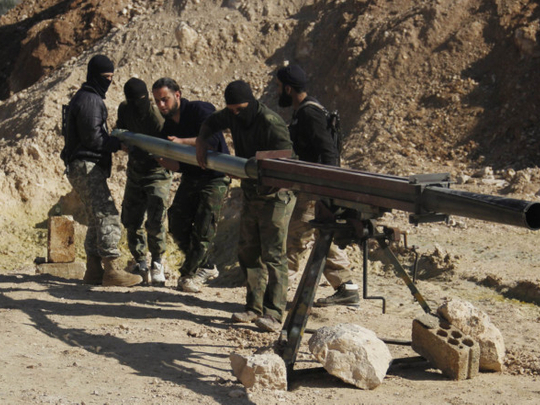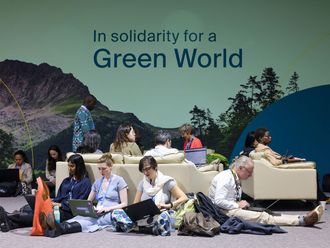
Following the immeasurable brutality of the Israeli assault on Gaza last summer, coupled with a completed siege and sealed borders on all sides, Hamas finds itself in an almost impossible situation, leading it to foster closer ties with Iran. Seemingly isolated from many Arab countries, and left by the international community to languish on its own, the movement is facing formidable challenges: a mired economy, ruined infrastructure, destroyed Rafah tunnels and a continued Israeli siege.
Following Operation Cast Lead, which took place in July-August 2014, instead of speedily setting up government ministries in Gaza, funnelling money into the devastated Strip and beginning the reconstruction process right away, the Ramallah-based government of Rami Hamdallah delayed everything as a result of what could only be understood as political reasoning. Little of the money promised to rebuild Gaza has been delivered anyway. Even Gaza’s creativity in the art of survival is finding its limitations. Without an outlet, however restrictive, Gaza will not be able to cope for much longer.
Gaza could have survived, except that the Israeli war has left behind thousands of homeless families, over 11,000 wounded and its population entrenched in poverty.
So, what is Hamas to do?
Before the so-called Arab Spring, the region was divided in two political camps. One was known as the “axis of resistance” or the “rejectionist” camp. It consisted of Iran, Syria, Hezbollah and Hamas. The other is the camp of “moderates”, which pools US regional allies. The latter was positioned to offset the former. Initially, the Arab Spring in 2011 brought ample promise, before it dealt the whole region a massive blow. It wrought war and other bloody conflicts, but also unprecedented political and sectarian polarisation.
The unrest plagued the entire region, but the conflict in Syria was the litmus test. While small groups fought alongside Damascus, others sided with the opposition. Abbas’s Palestinian National Authority remained engaged in an inane “peace process” discourse, paying little attention to the thousands of dead and starving Palestinian refugees in Syria.
Hamas’s manoeuvers proved costly. It broke away from the Iran-Syria-Hezbollah axis, joining an Arab front that was united in wanting to see the ousting of the regime of Bashar Al Assad.
Splinter
But the war grew more grisly on both sides, and the opposition splintered between many groups, including the notoriously violent Daesh (the Islamic State of Iraq and the Levant). The calls for democracy and reforms were no longer a dominant discussion as Daesh declared a “caliphate”, and the conflict’s main vocabulary was dominated by sectarian and religious language.
Then, Israel attacked Gaza. The media discussion was centred on Hamas’s unproven connection to the kidnapping and killing of three Israeli teenage colonists. That was rarely the story. With Hamas’s departure from the “axis of resistance” and its isolation by the “moderate” Arab camp, the movement was at its weakest. Israeli Prime Minister Benjamin Netanyahu found an opportunity to deliver a final blow to Hamas as he hit Gaza with unmatched brutality. He intended to break Hamas politically before degrading its military capabilities.
The massive destruction of infrastructure — schools, hospitals, factories, government buildings, shops, tunnels and thousands of homes — was not Israel’s everyday callousness in its treatment of Palestinians. It was meant to ensure that Hamas would have no chance to govern Gaza after the war, and simply collapse under the impossible task of rebuilding the Strip, with no aid, no cement and no material lifeline whatsoever.
While the war itself ended with a high toll of over nearly 2,200 dead Palestinians, an economic war is still being waged on two different fronts: Israel and Egypt. And as the PNA in Ramallah lazily ponders its return to Gaza, Hamas has begun looking to Tehran for help.
Arabs were either consumed by their own problems or watched Gaza’s severe punishment by Israel with a mix of dread, amusement and anticipation. Those who urged Hamas to part ways with Iran failed to move forward and fill the existing gap of weapons, money and other material aid. Not only did many in Hamas see that as a betrayal, others who never sought a break up with Iran began pushing the movement to reconsider its political alliances once more.
Aside from the Israeli war on Gaza, three other factors pushed for further cementation of ties between the two parties: one, the return to political consensus among Gulf countries and the pressure on Qatar to distance itself from the Muslim Brotherhood in Egypt and those affiliated with them; two, the lack of any political latitude being offered through the failed or delayed reconciliation with Fatah; and three, the permanent closure of the Rafah border.
When an Israeli helicopter gunship hit a car convoy in the Syrian province of Quneitra on January 18, killing six Hezbollah fighters including the son of the legendary leader Imad Mughaniyeh — who was himself assassinated in Damascus in a Mossad-CIA operation in February 2008 — along with an Iranian commander, Hamas was quick to offer condolences. The most notable of these messages came from Mohammad Al Deif, the leader of the Al Qassam Brigades. Al Deif called for the directing of rifles in a joint battle against Israel.
A matter of time
Political messages also poured in, one from former Hamas government prime minister Esmail Haniyeh (who is the current deputy chief of the movement’s political bureau). “We declare our full solidarity with Lebanon and the Lebanese resistance,” he said, calling for unity against the “principal enemy of the ummah”.
This, in addition to Hamas’s leader, Khaled Mesha’al’s call for peaceful resistance in Syria, indicating that the Hamas search for a return to the Iran camp was a matter of time.
In fact, that return will happen sooner rather than later, as suggested by Ahmad Yousuf, Haniyeh’s former top advisor, and an influential member in the movement. He said that Mesha’al should be heading to Tehran soon to meet with top Iranian leaders.
Hamas’s possible return to the Iran camp is likely to be cautious, calculated and also costly. There is a crisis of trust among all parties. For some in Hamas, however, that return was inevitable, if not essential for the survival of the movement as it faces mounting pressures.
But Iran and Hezbollah also need Hamas, at least to break away, genuinely or otherwise, from the dominant sectarian narrative that has embroiled the region. Iran’s and Hezbollah’s image — the latter once seen as the bulwark of resistance — is at an all-time low.
Of course, many are frustrated by Hamas’s shift in tactics, insisting on not seeing the group’s impossible dilemma. The Syria opposition has made its feelings clear.
But for Hamas the choices are stark, and equally difficult. An Arab poet once described such tough choices as “two matters, the sweetest of which is bitter”.
Some will chastise Hamas’s new strategy, others will praise its return to common sense. But for Hamas and Palestinian resistance in Gaza, it is primarily a matter of survival.
Ramzy Baroud is an internationally-syndicated columnist, a media consultant, an author of several books and the founder of PalestineChronicle.com. He is currently completing his PhD studies at the University of Exeter. His latest book is My Father Was a Freedom Fighter: Gaza’s Untold Story (Pluto Press, London).








